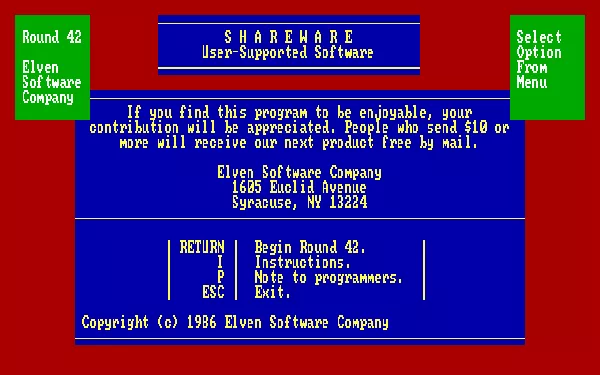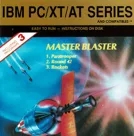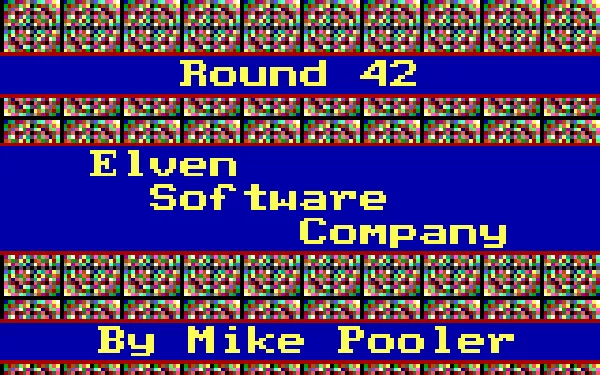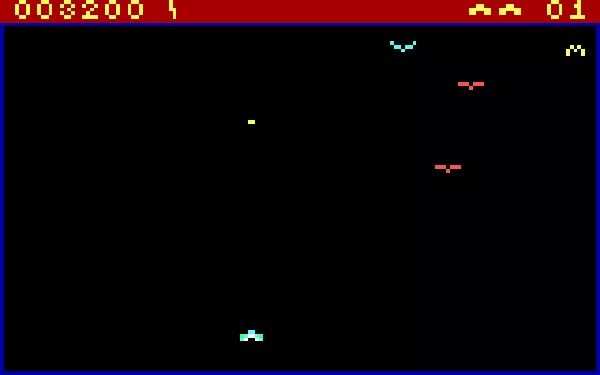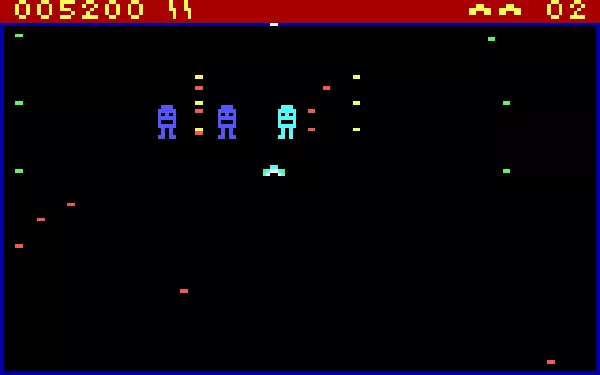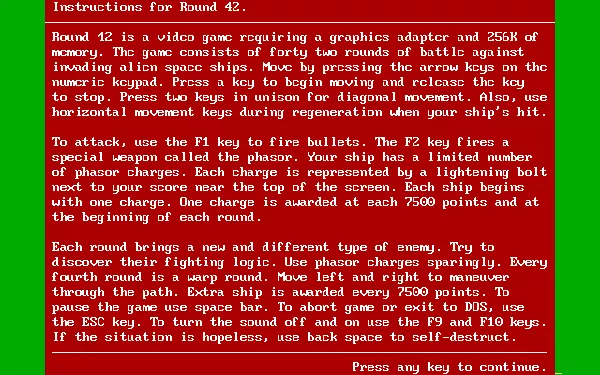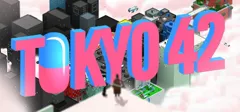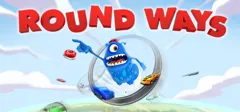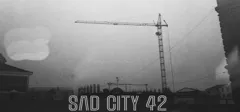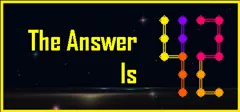Round 42
Description
A traditional space shooter involving 42 rounds of battle against invading alien ships (hence the name). Each round of aliens has different movement and firing patterns.
Against such odds, you are provided with two weapons: An auto-fire cannon, and a single-fire targeting laser. Extra ships and shots for the targeting laser are earned one per successful completion of a round (the auto-fire cannon has unlimited ammo).
Groups +
Screenshots
Credits (DOS version)
| Programming |
Reviews
Players
Average score: 3.6 out of 5 (based on 8 ratings with 2 reviews)
Somewhat of a minor classic on the PC. Old-school action!
The Good
This classic little shooter brings fast paced arcade action to low-end (really low-end) PCs. It wasn't the first game to do that, not by a long shot, but most of its predecessors were commercial games, made possible with extremely low-level assembly coding and distributed on copy-protected floppies unreadable by DOS (a.k.a. 'PC Booters'). Then out of nowhere comes THIS baby, and does the same in plain ol' vanilla DOS, being coded in Turbo Pascal, and released as shareware. Owners of cheap 8086-based clones worldwide cackled with glee, and this became one of the first shareware games on the PC to gain popularity and recognition. Which doesn't mean fame or praise, because if you weren't Sierra you settled for underdog status and asked for seconds, but almost everyone who owned a PC before 1992 or so has played this one.
The sheer harmonious simplicity of the sparse, blocky graphics is guaranteed to give a series of coronaries to any of today's pampered gamers - a good deed by any moral standard (other than plainly wrong moral standards, that is. If yours says otherwise, replace the disk in drive B: and hit any key). Basically, you shoot at wave after wave of different aliens and blow them up. Or you phaser them and blow them up. Occasionally you zoom through jagged tunnels, taking great care not to scrape the walls, or you'll get to scrape your ship off of them.
The action is fast, and the animation is fluid and smooth on even the most sluggish 8088, which was no small feat, even for commercial games. Even the sound is pretty good as far as PC speaker games go - you actually feel as if you're in a video arcade! Sure, that only happens because it cleverly gives the impression of sixty different forms of incoherent noise playing at once, but what, you don't think that's impressive? What did you expect, digitized speech? Go play Castle Wolfenstein or something.
When you sum up all of the above, science has empirically proven that there's only one possible result - a gigantic heap of repetitive, mindless FUN. This is a game you will play over and over. Literally, because it doesn't end; when you finish the titular round 42 you just warp right back to round 1, in the spirit of existential philosophy which was the grand tradition of all early '80s video games. But who cares - you'll actually want to continue playing.
The Bad
Variety is the spice of life, but this game is on an eternal spice-free diet, because there is none. You blow stuff up until you get blown up. No hidden bonuses, no element of defense, no skill-testing special events, no surprises, just pure survival. Of course, a game like this needs variety as much as it needs 3D acceleration and a realistic physics engine (hint: not at all), but for the misguided souls who might be put off, caveat emptor.
The graphics themselves are pretty bad by any standard, let's face it. This game uses the CGA's tweaked low-resolution mode to get more colors on screen - a whopping 16! - but it never bothers doing anything really interesting with them, so the result looks very Atari 800-esque. No background elements, no fancy decorations, just your blocky ship shooting blocky bits at its blocky adversaries. Older games had used this graphics mode to far better advantage (like Moon Bugs from Windmill Software), so I don't know what's the deal here. It shouldn't bother you anyway, but I've heard that some people these days need ultra-detailed, texture-filtered realistic graphics to enjoy a game, because it makes up for their total lack of imagination, so it's worth a mention.
The controls can get clumsy, and every once in a while the game demonstrates awareness by ignoring a vital keypress just when you're about to get vaporized by a hostile pixel. This doesn't happen to often, but the key assignments themselves are stupefying. Starring in the lead role as Fire Button, we have... F1? Phasers, F2? Really? What did my ergonomic well-being ever do to you?? Speaking of Windmill Software, this wacky control scheme was a staple of their early games - one thing that wasn't worth copying from them - and I have no idea why the guy(s?) at Elven took such a liking to it.
But hey, at least they didn't go with the frankly infuriating "O-P-A-Q" scheme for movement keys (which showed up in quite a few PC games back then, evidently because some programmers never noticed that the PC's numeric keypad had little arrows on it). Oh, and joystick support? Get outta here, does this look like a Magnavox Odyssey? What next, a mouse?
If you didn't have a true blue CGA card, your mileage would vary when it comes to seeing anything at all. Any dodgy clone, or anything more advanced (EGA and up), and you'd get your game screen squeezed to half its height, or have only half the screen visible at all, or get wacky blinking garbled text instead of graphics. My favorite was when I ran it on one old SVGA card, which shrunk the game to postal stamp size and tiled it 16 times on screen. Fun times.
The Bottom Line
A classic slice of repetitive, blazing fast action FUN for ancient PCs (and thankfully, their emulators), with probably the best "fun to complexity" ratio out there. If you don't have the lightning reflexes of a ninjitsu master and the fluid sensory control of a Shaolin elder, you might wanna chicken out... here's a Mahjongg bootdisk.
DOS · by vileyn0id_8088 (21036) · 2013
The Good
Everything! It's wonderfully programmed, has amazingly long gameplay, is FUN... and it's just plain fast on my old 8088 :)
The Bad
Well, it kinds "kind of" repetitive :)
The Bottom Line
Wonderful! Go ahead and grab it.
DOS · by Tomer Gabel (4534) · 1999
Trivia
One of the few games to use CGA's tweaked "low-res" graphics mode effectively. See screenshots for examples.
"A Note To Programmers" contains the following text:
The code for Round 42 is written in Turbo Pascal. Source code is available from Elven Software Company for a $30 contribution.
Low resolution mode is accessed through a group of Turbo Pascal routines called Lores Toolbox. This package is available from Elven Software Company for a fee of $45. Documentation and demo programs are included with Lores Toolbox.
Functions supported by Lores Toolbox include fast plotting and reading points, plotting circles and lines, writing text, and plotting user defined icons (as seen in Round 42).
Analytics
Upgrade to MobyPro to view research rankings and price history! (when applicable)
Identifiers +
Contribute
Are you familiar with this game? Help document and preserve this entry in video game history! If your contribution is approved, you will earn points and be credited as a contributor.
Contributors to this Entry
Game added by Trixter.
Additional contributors: OmegaPC777.
Game added August 13, 1999. Last modified January 8, 2025.


